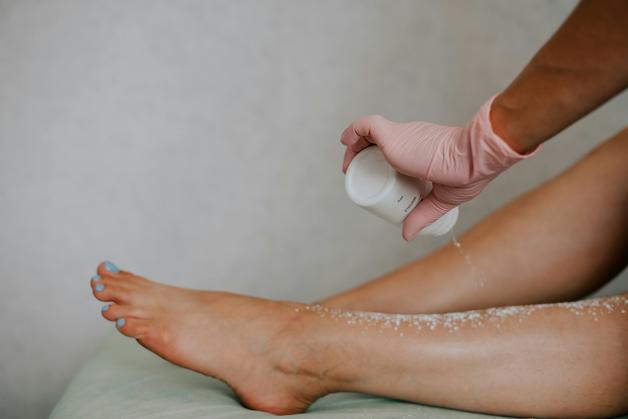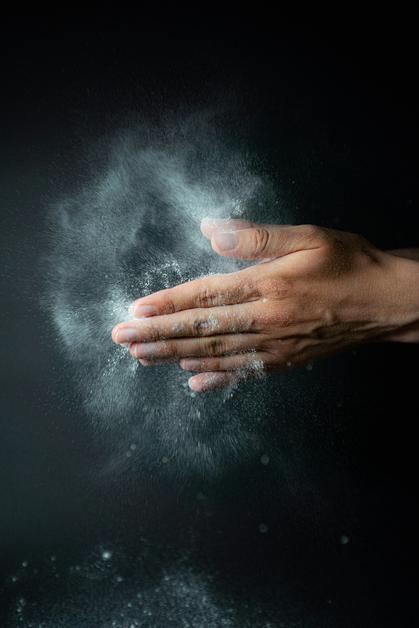Moisture, irritation, and delicate baby skin: these are the daily realities for many parents, often accompanied by that familiar question—how best to protect vulnerable skin without risking unseen harm? If you have ever reached for a baby powder container and paused, wondering about older family habits, new research, or alternative options, you are far from alone. While baby powder uses and alternatives are a staple in many routines, questions about safety, allergies, and ingredient transparency keep swirling. What should you really know about powders, modern formulas, and their substitutes? Which strategies genuinely minimize discomfort and support healthy skin? Prepare for a clear exploration revealing the medical facts, smart practical advice, and the most up-to-date pediatric recommendations on baby powder uses and alternatives. Here you’ll find guidance that actively respects your concerns as a parent and equips you with evidence-based decisions for your family’s well-being.
Unpacking traditional baby powder: origins, evolution, and reasons for popularity
Why have generations trusted baby powder as their ally in daily care? Classically, it’s about defense—creating a dry barrier to reduce friction, keeping skin soft, and managing sweat-prone folds (think neck creases, joints, or the diaper area). At the heart of classical formulas is talc, a silky mineral once celebrated for absorbing moisture with remarkable efficiency. Talc’s microscopic structure means it clings to dampness and traps it, offering baby and parent a tangible, powdery reassurance. Over decades, its use extended from tiny bottoms to the feet of marathon runners, gym-goers’ gear, and even as a makeshift dry shampoo for adults. Cultural traditions, multitasking practicality, and the sensory comfort of smooth, fresh-smelling skin all explain the widespread adoption of baby powder uses and alternatives. Yet, shifting medical consensus—and high-profile legal controversies—now fuels caution.
Key ingredients: a shift toward safer, more natural options
Concerns arise swiftly once you learn that talc, in its natural form, can be contaminated with harmful minerals such as asbestos—a recognized carcinogen. Pediatric research highlights that talc’s ultrafine particles, while unseen, are easily inhaled by infants. The result? Breathing issues, persistent cough, and rarer but serious lung complications. Modern parents, sensitive to these findings, pivot towards talc-free formulas as a matter of routine.
Let’s break down the main players now populating ingredient lists:
- Cornstarch: Derived from corn, this fine powder absorbs moisture with a gentler respiratory profile than talc. It’s widely recommended for those seeking natural, hypoallergenic skin care.
- Arrowroot, tapioca starch, and oat flour: These botanical alternatives soothe irritation but differ in their ability to tackle dampness; oat flour, for example, shines as an anti-inflammatory but absorbs less.
- Kaolin clay: Highly absorbent and mineral-based, it’s best matched to adult skin due to potential dryness.
Always read labels with a clinical eye: seek out terms such as hypoallergenic, fragrance-free, and certified organic, particularly when considering any product for a baby’s sensitive skin. Remember, baby powder uses and alternatives are safest when transparency and simplicity drive your choices.
Science steps in: medical evidence, risks, and regulatory shifts
Picture the delicate lining of a newborn’s airways—soft, immature, easily overwhelmed by powders suspended in the air. Medical literature repeatedly points to three primary risks:
- Inhalation of airborne microscopic particles, especially talc, can result in irritated lungs, coughing, and rare but severe respiratory distress.
- Allergic reactions (contact dermatitis, swelling, or persistent rash), particularly if the powder includes added scents or preservatives.
- Legal and safety controversies: Reports of talc-based products contaminated with asbestos have led manufacturers to withdraw classic formulas and spurred ongoing lawsuits across the globe.
How have doctors and regulatory agencies responded to these revelations? Most pediatricians and dermatologists now advise forgoing talc entirely, instead favoring talc-free baby powder uses and alternatives. Professional recommendations emphasize vigilance: even so-called “natural” powders should be patch-tested on a small area and monitored closely for any signs of skin discomfort.
Practically safer: routines to protect delicate skin
So how can you shield baby’s skin without a cloud of powder? Babies thrive on frequent diaper changes—each change interrupts the moisture cycle and prevents rash. Pediatricians also stress the value of gentle cleansing: pat, never rub; allow skin to air-dry before the next diaper or layer of clothing. Where a physical barrier is needed, ointments with zinc oxide serve as a formidable shield, locking out moisture and soothing redness without risk of inhalation.
Here’s a concise action plan built around baby powder uses and alternatives:
- Cleanse with lukewarm water and a soft cloth after each change.
- Let baby’s skin air-dry regularly, especially before putting on a fresh diaper.
- Apply a water-based barrier cream with zinc oxide to prevent direct moisture contact.
- For powders, if used: always apply a small amount to your hands, away from your child’s face, and gently pat onto only the necessary area. Use sparingly and in well-ventilated spaces.
Decoding alternatives: do’s and don’ts
Plenty of families wonder—can you just swap in cornstarch or arrowroot and call it a day? While these baby powder uses and alternatives remove the asbestos risk, they require thoughtful application. Cornstarch, for example, can support bacterial growth if left on damp skin for long periods—so meticulous hygiene remains essential. Baking soda, another home favorite, absorbs odors but risks irritation for infants with eczema or delicate skin.
Practical alternatives—no powder required—may often serve you better:
- Schedule more frequent checks and changes for diapers or sweaty clothing.
- Promote “diaper-free” time to let skin dry naturally.
- Limit layers, especially during warm weather, to reduce sweat.
- Monitor for redness, swelling, or persistent rash—these signs always warrant a professional opinion.
In moments when powders are still desired, age-appropriate, talc-free products, applied with restraint and never near the face, can maintain comfort while minimizing risks.
Expanding beyond the nursery: creative baby powder uses and alternatives for families
Did you know parents often repurpose the same skin-friendly powders for life’s daily snags? Here’s a snapshot:
- Keep feet dry in shoes, especially in summer, by dusting a small amount of powder or cornstarch-based product inside.
- Absorb odor and moisture in gym bags or sports gear.
- Loosen stubborn jewelry knots with a gentle sprinkle.
- Remove sand from skin after beach days—powdered skin lets grains slide away effortlessly.
- Tackle oil stains on fabric or stop shoes from squeaking (but always avoid direct use on baby or toddler skin without a patch test).
Versatile, yes—but the golden rule endures: if in doubt, especially for sensitive or eczema-prone children, consult a healthcare professional first.
Key Takeaways
- Baby powder uses and alternatives have changed over the years as scientific understanding highlights previously unrecognized risks—especially for young children’s lungs and sensitive skin.
- Talc-based powders, once standard, are no longer recommended for babies due to risks of inhalation and occasional contamination with hazardous minerals. Talc-free powders—with ingredients such as cornstarch, arrowroot, or kaolin clay—are considered safer, though they demand careful and minimal application.
- Diaper routines emphasizing frequent changes, thorough drying, and targeted use of barrier creams with zinc oxide provide robust protection against irritation—often with no need for powders at all.
- For those preferring powders to combat moisture or chafing, opt for products specifically labeled for infant use and always review the ingredient list with a discerning eye.
- Skin reactions (redness, rash, swelling) require immediate discontinuation and medical advice—don’t hesitate to seek help.
- Baby powder uses and alternatives extend beyond babies—serving family life for everything from dry shampoo quick fixes to household cleaning tricks.
- Ongoing questions about products, reactions, or optimal routines? Trust pediatric expertise and remember: each family’s needs and choices are valid.
- For deeper insight, tailored advice, and health questionnaires designed for your children’s unique needs, download the Heloa app.
Embrace informed, gentle routines—modern care is not about perfection but about evolving with knowledge for every child’s comfort and safety.
Questions Parents Ask
Can you use baby powder on adults and in intimate areas?
Absolutely, baby powder is sometimes used by adults to help absorb moisture and minimize friction, especially in situations that can lead to chafing—like during sports, hot weather, or with tight clothing. For intimate areas, many prefer to look for talc-free and fragrance-free powders as these options are generally kinder to sensitive skin. If you’re thinking about using powder in these areas, favoring natural ingredients like cornstarch or arrowroot can make the experience more comfortable, and it’s wise to keep the application light to avoid any risk of irritation. If you notice any discomfort or persistent redness, consider stopping use and seeking gentle alternatives. Remember, every skin type reacts differently, so what works for one person may not suit another.
Are there moisturizers or oils that can be used instead of baby powder?
There are plenty of skin-friendly substitutes if you’d rather avoid powders altogether. Natural moisturizers like shea butter and coconut oil are often loved for their ability to gently soothe and protect skin. These options create a moisture barrier without the risks related to inhalation of powder particles. Whether it’s for diaper changes or just daily comfort, these oils are simple to use and usually well tolerated—even by sensitive skin. Do a small patch test first to check for any reactions, and enjoy smoother, hydrated skin, knowing you’re using a gentle approach.
What is safer: cornstarch, talc-free powders, or other natural alternatives?
For parents who are concerned about safety, talc-free powders and options like cornstarch or arrowroot offer peace of mind. These ingredients are widely considered safer than traditional talcum-based powders, especially for babies or those with sensitive skin. Cornstarch absorbs moisture while being less likely to cause respiratory issues when used properly. Arrowroot and similar natural powders provide mild, effective moisture absorption without harsh chemicals. As always, moderation is key: use small amounts, avoid the face, and choose products specifically designed for delicate skin to minimize any risks.










